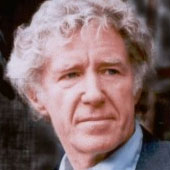Beyond the Oil Peak
Could increasing oil prices reshape living patterns around the world?
May 24, 2006
Few countries are planning a reduction in their use of oil. Even though peak oil may be imminent, most countries are counting on much higher oil consumption in the decades ahead, building automobile assembly plants, roads, highways, parking lots and suburban housing developments as though cheap oil will last forever.
New airliners are being delivered with the expectation that air travel and freight will expand indefinitely. Yet in a world of declining oil production, no country can use more oil except at the expense of others.
Some segments of the global economy will be affected more than others simply because some are more oil-intensive. Among these are the automobile, food and airline industries. Cities and suburbs will also evolve as oil supplies tighten.
Stresses within the U.S. auto industry were already evident before oil prices started climbing in mid-2004. Now General Motors and Ford, both trapped with their heavy reliance on sales of gas-hogging sport utility vehicles, have seen Standard and Poor's lower their credit ratings, reducing their corporate bonds to junk bond status.
Although it is the troubled automobile manufacturers that appear in the headlines as oil prices rise, their affiliated industries will also be affected, including auto parts and tire manufacturers.
The food sector will be affected in two ways. Food will become more costly as higher oil prices drive up production costs. As oil costs rise, diets will be altered as people move down the food chain and as they consume more local, seasonally produced food.
Diets will thus become more closely attuned to local products and more seasonal in nature. At the same time, rising oil prices will also be drawing agricultural resources into the production of fuel crops, either ethanol or biodiesel.
Higher oil prices are thus setting up competition between affluent motorists and low-income food consumers for food resources, presenting the world with a complex new ethical issue.
Airlines, both passenger travel and freight, will continue to suffer as jet fuel prices climb, simply because fuel is their biggest operating expense.
Although industry projections show air passenger travel growing by some five percent a year for the next decade, this seems highly unlikely. Cheap airfares may soon become history.
Air freight may be hit even harder, perhaps leading to an absolute decline. One of the early casualties of rising oil prices could be the use of jumbo jets to transport fresh produce from the southern hemisphere to industrial countries during the northern winter. The price of fresh produce out of season may simply become prohibitive.
During the century of cheap oil, an enormous automobile infrastructure was built in industrial countries that requires large amounts of energy to maintain.
The United States, for example, has 2.6 million miles of paved roads, covered mostly with asphalt, and 1.4 million miles of unpaved roads to maintain even if world oil production is falling.
Modern cities are also a product of the oil age. From the first cities, which took shape in Mesopotamia some 6,000 years ago, until 1900, urbanization was a slow, barely perceptible process.
When the last century began, there were only a few cities with a million people. Today there are more than 400 such cities, 20 of them with 10 million or more residents.
The metabolism of cities depends on concentrating vast amounts of food and materials and then disposing of garbage and human waste.
With the limited range and capacity of horse-drawn wagons, it was difficult to create large cities. Trucks running on cheap oil changed all that.
As cities grow ever larger and as nearby landfills reach capacity, garbage must be hauled longer distances to disposal sites. With oil prices rising and available landfills receding ever further from the city, the cost of garbage disposal also rises. At some point, many throwaway products may be priced out of existence.
Cities will be hard hit by the coming decline in oil production, but suburbs will be hit even harder. People living in poorly designed suburbs not only depend on importing everything, they are also often isolated geographically from their jobs and shops.
They must drive for virtually everything they need, even to get a loaf of bread or a quart of milk. Suburbs have created a commuter culture, with the daily roundtrip commute taking, on average, close to an hour a day in the United States.
While Europe's cities were largely mature before the onslaught of the automobile, those in the United States, a much younger country, were shaped by the car.
While city limits are usually rather clearly defined in Europe, and while Europeans only reluctantly convert productive farmland into housing developments, Americans have few qualms about this because cropland was long seen as a surplus commodity.
This unsightly, aesthetically incongruous sprawl of suburbs and strip malls is not limited to the United States. It is found in Latin America, in Southeast Asia, and increasingly in China.
Flying from Shanghai to Beijing provides a good view of the sprawl of buildings, including homes and factories, that is following the new roads and highways. This is in sharp contrast to the tightly built villages that shaped residential land use for millennia in China.
Shopping malls and huge discount stores, symbolized in the public mind by Wal-Mart, were all subsidized by artificially cheap oil. Isolated by high oil prices, suburbs may prove to be ecologically and economically unsustainable.
Read previous
China’s Silver Bullet
May 23, 2006
